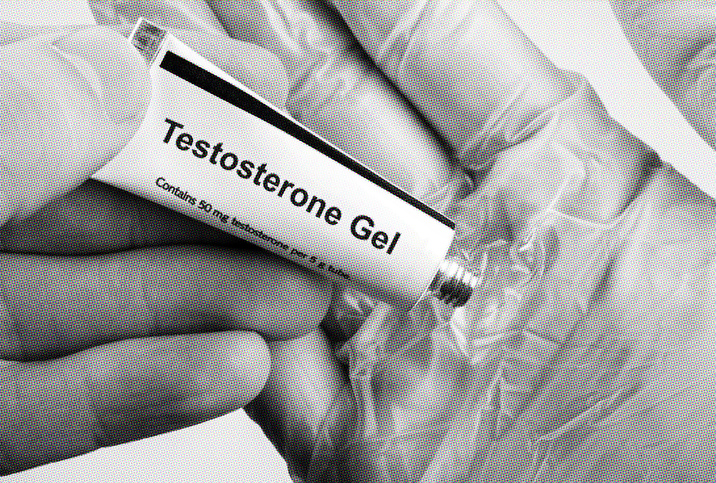A Brief Guide on What an FtM Transition Can Look Like

When you realize you're transgender, you don't magically receive knowledge of how to present, what changes to make or how to tell others. Transitioning can be daunting for anyone at any age, and since the process is so individual, it's hard to know where to start. With this guide, we hope to demystify the process and help you see what transitioning can look like.
Matthew Bryan, M.D., (he/him), associate medical director for LGBTQIA+ health at Intermountain Healthcare in Utah, said the first step he takes when explaining the process to cisgender people is to tell them that transitioning is not a choice.
"One's gender identity—the inside—needs to match their gender presentation—the outside," Bryan said. "When these two don't match, it can create a lot of inner turmoil which contributes to a lot of other health issues."
Transgender men, or someone who is transitioning from female-to-male (FtM), are assigned female at birth. However, if their gender identity doesn't match their gender presentation, transition enables them to present as more masculine and feel more comfortable in their skin.
Terminology
Disclaimer: Here at Giddy, we want to recognize the world of gender-diverse people. There are plenty of people who don't identify as male or female who take steps to transition. However, for the sake of simplicity, we will be referring to all individuals who are moving toward a more masculine identity as trans men or FtM.
Before we get into the guide, it's important to understand some terms we'll be using:
FtM: Female-to-male. This term describes individuals who were assigned female at birth and have since chosen to honor their gender identity by transitioning to male.
Cisgender: People who identify with the gender they were assigned at birth.
Transgender: People who don't identify with the gender they were assigned at birth.
Gender dysphoria: The mental distress that transgender people experience due to the disconnect between their body and their gender identity.
Gender expression: How someone presents themselves to others. Both cisgender and transgender people have gender expressions.
Gender identity: An individual's internal sense of their gender (note: not their sexuality).
Passing: When others, particularly strangers, see a transgender person as their gender identity. When an FtM individual "passes," they are seen as male in their everyday lives.
Coming out
A trans man comes out when he lets others know that he identifies as male. This process can include telling friends, family members and work colleagues that he has changed his pronouns and name.
Coming out is a personal and complex decision. When trans men come out, they risk being disowned by family, fired from their job and/or facing other forms of discrimination for who they are.
The safest way to come out is to start with someone supportive. The risk of coming out to someone close is typically smaller, because this person has already shown their support. Once a trans man has someone in their life who is supportive, their presence can make coming out to family easier. If there's a safety concern, he can bring someone supportive to mediate the conversation.
FtM individuals are under no obligation to come out, especially if they're worried for their safety.
Many people think coming out is done all at once. However, trans people often come out several times, and some for the rest of their lives as they meet new people.
Socially transitioning
Socially transitioning describes the process trans men undergo to achieve a gender expression that more closely matches their gender identity. During social transition, transgender individuals use nonmedical methods to better portray their gender identity.
For FtM individuals, socially transitioning can include any of the following steps:
Changing clothing choices
Sometimes trans men will change how they dress before they realize they are transgender or before they come out to their social circle. They might stop wearing skirts, dresses and feminine patterns, and start wearing more pants, solid colors and other men's clothing. Transgender men all have different styles of dress and expression, just like cisgender men do.
Grooming differently
Men and women typically have different grooming habits. Generally, men have shorter hair, don't wear makeup and use different hygiene products.
Trans men may start to adopt these habits associated more with men. If a trans man is on testosterone therapy, he might start growing out his facial hair, as well.
Attending psychotherapy
Seeing a gender therapist can help trans men tackle difficulties that accompany transitioning. Even if surrounded by loving and supportive people, trans men basically have to relearn how to live their lives.
Working out
Exercise combined with testosterone therapy can help facilitate fat redistribution that often comes as a side effect. Trans men might want to put on more muscle to present as more masculine.
Binding and packing
Binding involves flattening the chest to seem more masculine. Trans men can also choose to bind their hips or thighs to reduce curves.
The effectiveness of binding varies from person to person due to differences in body shape. Common areas for binding include the chest, hips and stomach.
One of the safest methods is to use a chest binder or medical compression shirt. Layering shirts or sports bras can also be effective. Other binding products include waist trimmers, back support devices and compression shorts.
Binding can be dangerous when done incorrectly. For example, duct tape and bandages can do permanent damage to the rib cage. Even wearing a binder designed for this purpose for more than eight hours can restrict the airway and make it difficult to get oxygen.
Packing refers to creating a male-like crotch bulge. The goal of packing changes depending on preference. Some people don't pack at all, while others pack only on certain occasions. Packing devices can include premade items, prosthetic penises, and straps and harness devices.
Both packing and binding can cause skin irritation and sweating.
Hormone replacement therapy
Sascha Blank, a board-certified health and wellness coach based in San Francisco, offers inclusive care for the LGBTQIA+ community through all stages of their lives.
"While 75 percent of people who transition never pursue surgery, testosterone has become a viable option to help ease feelings of dysphoria or discomfort," Blank said.
Hormone replacement therapy (HRT) is the most common step to medically transition. Most of the time, this means taking regular doses of testosterone. For transgender teens, this can also involve taking puberty blockers to prevent body changes relevant to their sex assigned at birth.
The different formulations of HRT typically include injectable solutions or transdermal patches or creams, Bryan said.
FtM individuals use HRT to make changes to their body they wouldn't achieve otherwise, such as an increase in body hair production, voice deepening, weight distribution and gain, increased libido and redistribution of facial fat. They may also experience less intended effects such as oilier skin and increased appetite.
HRT requires a healthcare provider to monitor the treatment, but the issue becomes complicated for trans men who fear their quality of care will suffer from transphobic practitioners.
"Many transgender people do not disclose their situation to their physician or medical provider," Blank said. "When someone is on HRT, bloodwork results will look different than for someone without exogenous hormones."
Voice and speech therapy
Some FtM individuals find they're happy with their voice after going through HRT, while others may struggle to have a masculine voice and feel dysphoria when they speak.
Voice therapy helps transgender people learn to control their voice, lower their pitch and develop speech patterns that come across as more masculine.
Name changes and gender markers
While a trans man may feel, look, sound and socialize as a male, his legal documents and IDs may not necessarily match. Fixing the issue isn't "one size fits all," explained David Reischer, CEO of legaladvice.com.
"The process for changing a legal name and/or updating gender marker depends on where a person lives, where they were born and other individual circumstances and needs," Reischer said.
Most states require a court order for an individual to change their name, and each state has a different process for changing gender markers. Once an individual has updated their legal name and gender marker, they have to update legal documents to reflect the changes they've decided to make. Reischer recommends updating legal records in the following order:
- Legal name and gender marker change
- Social Security records
- State license or ID
- Bank statements, financial documents, insurance records, school and employment records
- Passport
- Birth certificate
Upper surgeries
Since having a more feminine chest can be one of the most common causes of gender dysphoria, trans men may opt for upper surgery in the form of a double mastectomy. This is sometimes referred to as top surgery.
Most trans men get one of two types of top surgery: double incision or keyhole incision. The double incision procedure is more invasive and leaves scars, while keyhole incision surgery is carried out through the nipples. The chosen method depends on body type and surgeon skill.
Sometimes insurance covers top surgery. However, many trans men have to pay out of pocket—up to $10,000 for the procedure alone.
Other upper surgeries are less common and include options such as facial masculinization and voice masculinization. However, insurance companies see these procedures as voluntary plastic surgery and they are not covered in most policies.
Bottom surgeries
Many trans men choose not to receive bottom surgeries because of the varied complications involved, but there are several different types, including:
- A hysterectomy is a surgical procedure to remove the uterus.
- An oophorectomy is a surgical procedure to remove one or both of the ovaries. During a bilateral salpingo-oophorectomy, both fallopian tubes are removed, as well.
- A vaginectomy is a surgical procedure to remove the vaginal lining and fuse the vaginal walls to close the vagina.
- A scrotoplasty is a surgical procedure where the labia majora is dissected and rotated to create a scrotal sac.
- A metoidioplasty is a surgical procedure to create a phallus from existing genital tissue.
- A phalloplasty is a multistaged surgical procedure to create and attach a penis.
Clearly, a trans man has many avenues of gender-affirming surgery to pursue if he wishes, but just because the medical procedure may seem interesting and novel to a cisgender person, this is not an appropriate subject to discuss.
"You don't ask a transgender person about their medical surgeries," Blank said. "Questions like, 'Did you get bottom surgery?' or 'How's your new penis?' should never be asked."
The actions a trans man decides to take during his transition should serve the goal of comfort and gender expression. No one can determine what that looks or feels like except the man who is transitioning, but loved ones, allies and physicians in his life can support these choices to make the process smoother.
"One of the most rewarding parts of my career is helping folks navigate gender-affirming care," Bryan said. "I have never seen so much appreciation and true gratitude when people can be their authentic selves. It is palpable and powerful."


















